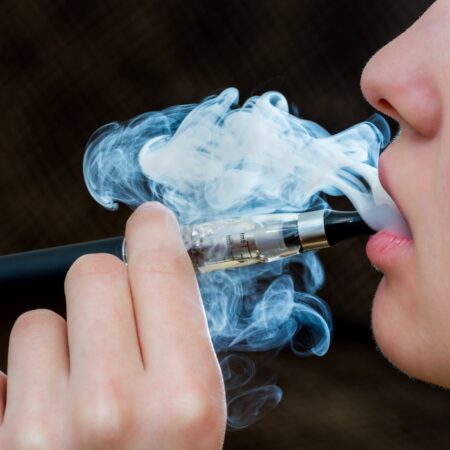If you are the parent of a teen, you’ve probably heard the word “vaping,” but do you really know what comes along with this trendy addiction? It can be tricky to sort through the myths to get to the truth behind this latest craze of teens and young adults.
The new ciggie
First, it’s important to know that a “vape” (also called an e-cigarette, or e-cig) is not a substance but a method of administering a substance. The device vaporizes whatever you put into it instead of burning it. The most commonly used vaped substances are nicotine and marijuana, as well as flavored elements.
Second, it’s important to know how prevalent vaping has become. Vaping is sometimes marketed as a tool to help individuals quit smoking, but many young people start using substances through vaping. The Surgeon General has said that vaping in teens has reached epidemic levels, and research shows that 19% of high school seniors have vaped nicotine while 10% have vaped cannabis. Experts predict that vaping among teens will only increase.
Why is vaping so popular with kids?
One reason is that teens do not fully comprehend the dangers of the substances they put in vape devices. Many teens do not even realize that e-cigarettes have nicotine—sometimes even more than a traditional cigarette (the popular JUUL cartridge contains as much nicotine as a whole pack of regular cigarettes). Others don’t know that even without the additives found in cigarettes, nicotine is a highly addictive and toxic substance.
As for vaping marijuana, most teens are uninformed about that as well. One study found that vaporizing marijuana actually delivered more THC than smoking it. And if you think that vaping CBD oil is safe because it doesn’t contain any THC, think again. Research shows that 1 in 5 CBD products contain THC. This means that vaping marijuana or CBD oil can have all of the negative consequences of smoking it—including addiction.
Hidden Dangers
One additional factor is the mystery of what might be in the vape. In addition to the fact that the substances marketed for vaping are largely unregulated, teens often share vapes and may not be aware of what others are putting in it. A teen may be expecting nicotine but may end up vaping cannabis, alcohol, or even opioids.
As with all substance abuse prevention, talk to your kids often and early about vaping and the dangers associated with it. In fact, middle school is not too early for these conversations! Stay informed on the latest trends so that you can be the true source of information for your kids.


